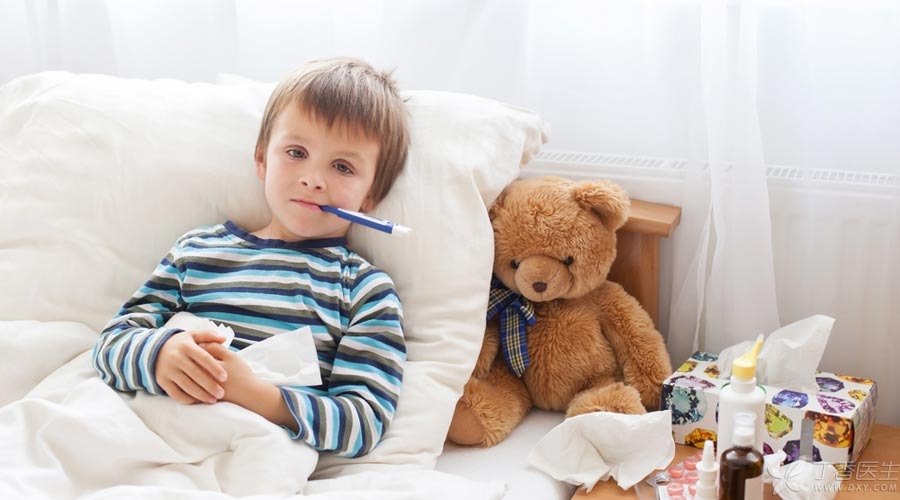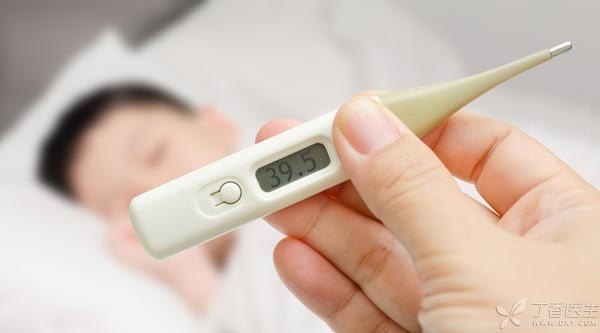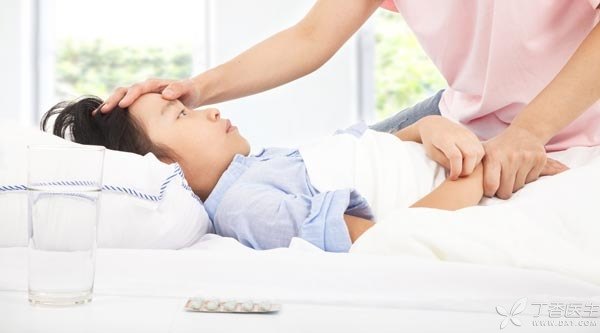
As soon as the baby has a fever, his parents are anxious.
Looking at the baby’s miserable appearance, my heart is also anxious, hoping to quickly reduce fever and feel better.
However, sometimes, parents’ understanding of fever and coping styles are not necessarily correct. For example, many parents are afraid that high fever will burn out the baby’s brain. In fact, unless it is high fever above 41 ℃ or high fever caused by some intracranial infection, in most cases, there is no need to worry that fever will affect the baby’s brain.
More correct understanding will reduce unnecessary worries. Knowing more scientific coping methods can help babies suffer less.
This article has taken stock of nine common misunderstandings in dealing with children’s fever, hoping to help all parents.
Myth 1: Cover Sweat with Quilt
This seems to be a [ancestral] method to reduce fever. Once fever occurs, many parents’ first reaction is:
Come on, cover the quilt tightly and sleep with sweat.
However, this is a big mistake. The so-called “just cover up your sweat” statement is groundless.
The baby can sweat, indicating that the disease is beginning to ease and the body can regulate its body temperature normally. This is not the credit of covering the quilt.
Before the disease is relieved, covering more or wearing more is not conducive to heat dissipation and cooling. When the baby is hot, it produces more heat than heat dissipation. It is always covered so that the body temperature may continue to rise. Even because the temperature is too high, inducing the baby to twitch.
Clove Mother Suggests:
The ambient temperature makes the baby feel comfortable. Take off a dress when it is hot, add a quilt when it is cold, and don’t cover your sweat deliberately.
Myth 2: Cold/Warm Water Wiping
This is another [antipyretic method] that parents like to use.
However, after wiping the bath, it is often the temperature on the body surface that drops temporarily. Only after taking the body temperature can we know that the fever has not subsided.
Relevant guidelines in Europe and the United States believe that warm water bath or cold/warm water wiping has no effect on antipyretic and does not recommend such antipyretic methods. Domestic guidelines for diagnosis and treatment of acute fever in children point out that warm water wiping bath should be combined with antipyretic and cannot be used as the main antipyretic method.
Many hot babies are usually groggy and want to sleep. It will be very unhappy to be wiped around at this time, but they may cry and shiver.
Clove Mother Suggests:
Wiping bath is not a way to reduce fever. If the baby does not reject wiping bath, and this way can really make the baby feel comfortable, it can be used as an auxiliary means to try it.
Myth 3: Alcohol Wiping
Parents are absolutely forbidden to use this method to cool their babies.
The antipyretic effect of alcohol wiping is not significant and the duration is short.
Alcohol itself may irritate the baby’s delicate skin.
When the body is hot, alcohol is more easily absorbed into the body through the skin, causing baby alcoholism.
Clove Mother Suggests:
Don’t do this at any time!
Myth 4: Hurry to Take a Cold Medicine to Reduce Fever
Pediatricians usually use 38.5 ℃ as the dividing point between taking antipyretic drugs. If the child is in good spirits, 39 ℃ is not necessary to take antipyretic drugs.
The purpose of antipyretic drugs is to reduce children’s discomfort, not simply to cool down.
At present, the most widely used antipyretic drugs in pediatrics are acetaminophen (Tylenol, Baifuning) and ibuprofen (Merrill Lynch, Thorn).
For general fever, a single drug can be used, not mixed. For persistent high fever, the two drugs can be used alternately under the guidance of a doctor.
It should be emphasized that nimesulide is banned for children, and analgin and aspirin are not routine drugs in pediatrics.
Clove Mother Suggests:
Always keep antipyretics at home and learn how to use them correctly. Antipyretics begin to produce effects about half an hour after taking them. If the body temperature does not decline, seek medical treatment in time.
Myth 5: Fast Fever Reduction by Injection Needle
Oral drugs or infusion bottles are just ways of administration and have their own scope of application. It cannot be simply said that one must be better or worse than the other.
As far as the fever of the common cold is concerned, taking antipyretic drugs correctly can usually have a very good effect. At this time, it is required to play the infusion bottle, but the baby has received an extra injection.
Also, be sure to know that antibiotics are not a panacea for fever-they are only aimed at bacteria and some bacteria such as mycoplasma and chlamydia. Most colds and fevers are caused by viruses. If you hang a bottle of so-called antibiotics [anti-inflammatory bottles] at this time, you are simply fooling around.
Clove Mother Suggests:
Pay attention to the child’s mental state and disease development. Let the child drink more water. More comfort and companionship, less unnecessary worries.
Myth 6: Antipyretic Patch to Treat Fever
Antipyretic patch takes away heat by volatilization of water vapor from hydrogel. To put it bluntly, it is another way of physical cooling.
However, research shows that such physical cooling effect is not good. Do you think, the whole body of warm water wiping effect is limited, slap-sized a cold towel, how much effect can there be?
Some parents think that antipyretic stickers can be used to prevent the head from being burned out by high temperature. But in most cases, fever will not burn out the head. And if the disease really can damage the brain, a small antipyretic sticker cannot prevent this damage.
In addition, some antipyretic stickers add mint, borneol and other cool substances, and children may not like this feeling. If you are allergic to similar products again, the loss outweights the gain.
Clove Mother Suggests:
Again, if this method can really make the baby feel comfortable, it can be used as an auxiliary means to try it. But don’t expect [to reduce fever as soon as it is pasted].

Myth 7: Measure Body Temperature with Mercury Thermometer
Strictly speaking, this is not a mistake.
But now academics are recommending phasing out mercury thermometers in pediatrics, because mercury thermometers can cause accidents such as mercury poisoning and aspiration. Electronic thermometers are safer than ear thermometers. Both are more accurate and convenient, and ear thermometers are relatively more expensive.
Myth 8: Pinch People during Convulsion
Febrile convulsion is convulsion caused by fever. It is common in the stage of body temperature rise. The higher the body temperature, the greater the probability of convulsion.
Pinch people, can’t stop convulsions, but may cause additional damage.
The cause of febrile convulsions is still unclear, but fortunately most febrile convulsions last for a short time and mostly relieve themselves within 1-5 minutes. Moreover, febrile convulsions have a good prognosis and only a few will turn into epilepsy.
Clove Mother Suggests:
When the child suffers from febrile convulsion, put the child flat on the bed with his head tilted to one side, untie the clothes and avoid bumping and injury. Do not put anything or give medicine into the child’s mouth.
If conditions permit, use mobile phones to record the appearance and duration of the child’s convulsions so as to facilitate doctors to judge the disease condition.
After the convulsion is over, go to the hospital for examination in time to clarify the cause of fever and eliminate the possibility of intracranial infection.

Myth 9: If the burning temperature is not high, let it go.
Parents with big hearts are not without them:
The body temperature is not high, just endure it.
After all, fever is a warning to the body: you are ill.
Laissez-faire, can be regarded as competent parents. Clarify the cause of fever, timely and scientific treatment, is the correct approach.
In addition, the standard of fever severity in children is not only the body temperature, but also the overall mental state of the baby.
Clove Mother Suggests:
If the child does not want to move, has no appetite, is groggy and has no spirit, and the overall state is very poor, even if the body temperature is not particularly high, he should consider sending a doctor in time to find out the reason.
